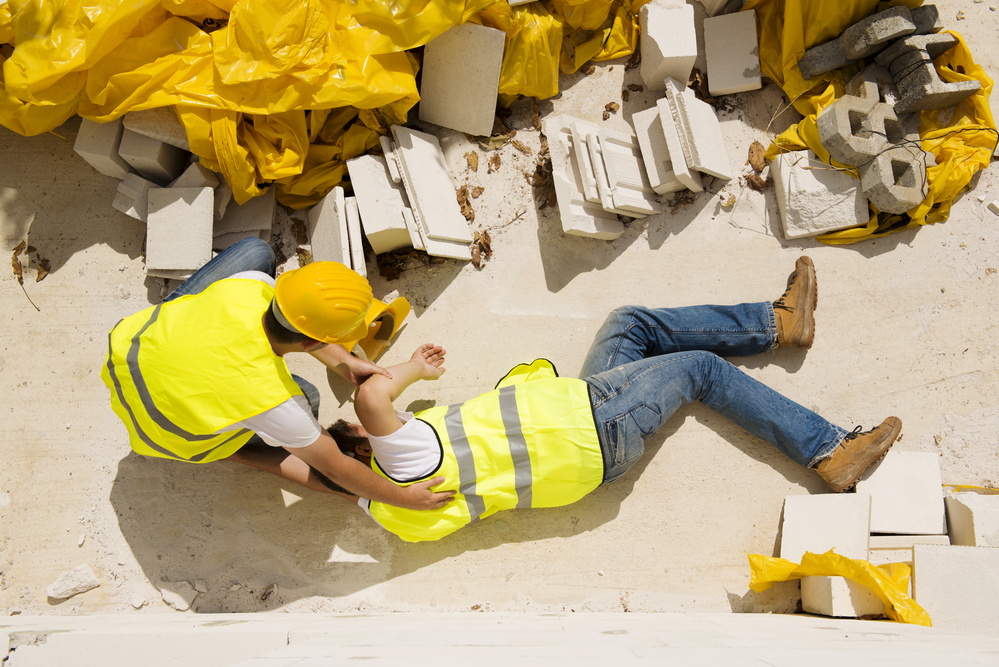 Construction sites are host to a number of potential dangers. With unstable and uneven surfaces, heavy objects often being raised overhead by machinery, power tools, and heavy-duty equipment all in close proximity to one another, there are many opportunities for injuries on a construction site. So, if an injury does occur, who is liable for that injury? Can the injured party receive compensation for the medical bills they receive afterwards? Keep reading to find out more.
Construction sites are host to a number of potential dangers. With unstable and uneven surfaces, heavy objects often being raised overhead by machinery, power tools, and heavy-duty equipment all in close proximity to one another, there are many opportunities for injuries on a construction site. So, if an injury does occur, who is liable for that injury? Can the injured party receive compensation for the medical bills they receive afterwards? Keep reading to find out more.
Who Was Injured?
One of the first questions that we would need to address when determining liability is who the injured party is. If the injured individual is a civilian who was trespassing at the construction site, their injuries would be considered a result of their illegal activity and, therefore, nobody else could be held liable for those injuries. For example, many individuals who are having a house built have a tendency to show up at the construction site to see how their future home is progressing. However, if they do not have express permission from the builder to be on the site, they are still trespassing at an active construction site and cannot hold the builders or anyone else liable for their injuries. This is why home builders will often require future homeowners to sign a statement saying that they agree not to visit the site without permission and, if they do get permission to visit the site, that they will not hold the builder liable for any resulting injuries.
On the other hand, if the injured party is a construction worker who sustains an injury in the course of their work, they will be far more likely to qualify for some form of compensation. Typically, however, this is done by submitting a workers’ compensation claim, rather than pursuing a personal injury case. If the worker’s claim is denied, or if they receive a lower payment than they believe they are entitled to, the worker may choose to pursue a personal injury claim, particularly if they feel their injury is a result of hazardous working conditions or someone else’s neglect. This leads us to our next important question.
What Caused the Injury?
Once we’ve established the injured party’s connection to the construction site and whether or not they were permitted to be there, it’s time to examine the circumstances that led to the injury. As we stated earlier, construction sites are inherently dangerous by nature, and extreme precautions are required to mitigate the risks associated with being on a construction site. If an injury still occurs due to the simple, somewhat dangerous nature of being present during construction, then an injured worker will likely be entitled to compensation via a workers’ comp claim, as mentioned above.
But what if the injury wasn’t a simple construction accident, and there were other factors that led to the injury? These will need to be carefully examined as well. Let’s say, for instance, that the injured worker was not wearing a hardhat, despite strict company requirements that all workers wear one while on site. The worker sustains a concussion after tripping and falling over some construction debris. While debris is to be expected on a construction site, the injury would have been minor if the worker had been following protocol. This neglect on the worker’s part may preclude them from receiving compensation for their injuries.
On the other hand, let’s say that a separate party was negligent, leading to the injury of another worker. For example, a roofing worker fails to secure their tools properly while on the roof; the tools fall on another worker down below, striking them in the back and causing spinal injuries. In a case like this, the negligent individual or their employer may be held liable for the resulting injuries. This leads to the final question we need to answer.
Who Do the Parties Work For?
Construction sites often have numerous subcontractors present at once. If it’s determined that the negligence of one party or another led to a worker’s injuries, liability can either fall to the negligent individual themselves, or to their employer. In the example given above, the injured worker may actually be entitled to pursue compensation from the individual roofing worker and from the roofing company that employed them. This can allow injured individuals to receive a higher payout to cover their medical expenses.
If you were injured on a construction site, The Harr Law Firm can help you to better understand what your rights are. Contact us today to receive a consultation regarding your personal injury case.